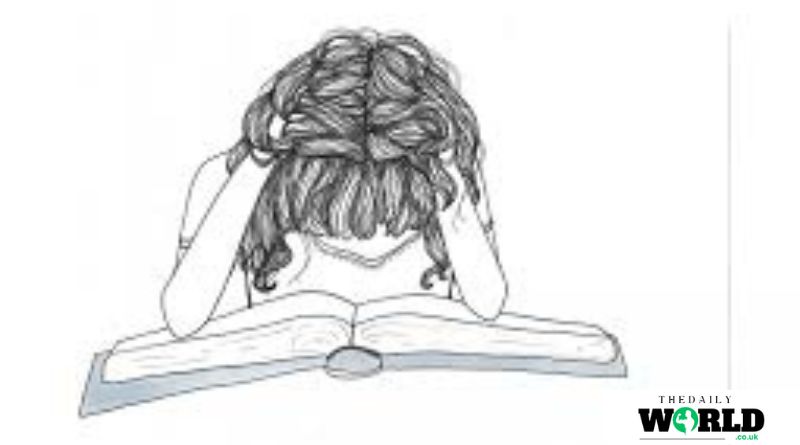
Easy:7wmmzo24hc4= Drawings is an accessible and enjoyable form of artistic expression that people of all skill levels can enjoy. For beginners, starting with Easy:7wmmzo24hc4= Drawings can be rewarding to develop foundational skills and gain confidence. Easy:7wmmzo24hc4= Drawings are often characterized by simplicity, focusing on basic shapes, lines, and minimal detail. These drawings are approachable and serve as a gateway to more complex artistic endeavors.
Learning easy drawing techniques is essential for building a solid artistic foundation. You can progressively challenge yourself with more intricate projects by mastering simple drawing methods. Additionally, practicing Easy:7wmmzo24hc4= Drawings helps improve hand-eye coordination, fine motor skills, and creative thinking. This article will guide you through various aspects of easy drawings, from basic techniques to advanced methods, ensuring a well-rounded understanding of this artistic practice.
Getting Started with Easy:7wmmzo24hc4= Drawings
Before embarking on your drawing journey, gathering the right supplies is essential. The basic tools will make the process smoother and more enjoyable for beginners. Start with a set of pencils that vary hard, such as HB, 2B, and 4B, to achieve different shading effects. A good eraser is also crucial for correcting mistakes and refining your work. Investing in sketching paper suitable for pencil drawings will provide a better surface for your art.
In addition to pencils and erasers, consider using drawing pens and markers for outlines and detailed work. These tools offer precision and can enhance the clarity of your drawings. A drawing board can also provide a stable surface for your sketches. These essentials will set you up for success and make your drawing practice more enjoyable and effective.
Basic Drawing Techniques
Understanding fundamental drawing techniques is crucial for creating Easy:7wmmzo24hc4= Drawings. Start by practicing primary lines and shapes. Drawing straight lines and curves helps improve your control and precision. Simple shapes like circles, squares, and triangles are the building blocks of more complex drawings. Mastering these shapes will enable you to construct more intricate designs with ease.
Shading and texturing are vital techniques that add depth and dimension to your drawings. Basic shading involves applying varying levels of pressure to create different tones. Experiment with hatching and cross-hatching techniques to add texture and shading effects. By practicing these techniques, you’ll learn how to create the illusion of light and shadow, making your drawings more realistic and engaging.
Drawing Simple Objects
Drawing everyday items is an excellent way to practice and improve your skills. Start with simple objects such as fruits and vegetables. These items are often readily available and provide a range of shapes and textures to work with. For instance, drawing an apple involves sketching a basic round shape and then adding details such as the stem and shading to create a realistic effect.
Another approach is to sketch everyday household objects like mugs or books. These items are often simple in design but can help you practice proportions and perspectives. Begin with basic outlines and gradually add details and shading. By practicing with everyday items, you’ll develop your observational skills and enhance your ability to capture the essence of objects in your drawings.
Nature and Animals
Drawing elements from nature, such as trees and flowers, can be relaxing and rewarding. Start with basic sketches of trees, focusing on their shapes and textures. For instance, drawing a tree involves sketching the trunk and branches and adding details such as leaves and bark texture. Flowers can be drawn by starting with the basic shape of petals and gradually adding intricate details.
Animals are another popular subject for Easy:7wmmzo24hc4= Drawings. Begin with simple sketches of animals like cats, dogs, or birds. Focus on capturing their basic shapes and proportions. For example, drawing a cat involves sketching its round head, body, and legs, then adding features like the eyes, nose, and whiskers. Practicing with nature and animals will improve your ability to draw living forms and add personality to your sketches.
Easy Drawing Styles and Approaches
Cartoon and comic styles are perfect for creating engaging and playful drawings. These styles often feature exaggerated features and simple lines, making them accessible for beginners. Start by creating simple cartoon characters with basic shapes and bold outlines. For example, a cartoon face can be drawn using a circle for the head and adding basic shapes for the eyes, nose, and mouth.
Comic strips are another popular approach to this style. Creating a comic strip involves designing a series of panels that tell a story. Focus on drawing simple characters and using explicit, expressive facial expressions. By practicing cartoon and comic styles, you’ll develop your ability to convey emotions and narratives through your art.
Doodles and Scribbles
Doodling is a fun and creative way to explore drawing without the pressure of creating perfect images. Doodles are spontaneous and often abstract, allowing you to experiment with shapes, patterns, and lines. Doodling can also serve as a warm-up exercise before starting more detailed drawings.
Creating doodle art can be a great way to enhance your creativity and relax your mind. Use a variety of patterns and shapes to create unique and exciting designs. Combining doodles with other drawing techniques can create more complex compositions. Embracing doodling as part of your drawing practice can lead to unexpected and inspiring artistic discoveries.
Step-by-Step Drawing Guides
Drawing faces is a fundamental skill that can be simplified into manageable steps. Start by sketching an oval shape for the head. Next, add guidelines to divide the face into sections like the eyes, nose, and mouth. This will help you maintain proportion and alignment. Draw the basic shapes for the eyes, nose, and mouth, then refine the details.
To add expression and emotion, focus on the placement and shape of the facial features. For example, adjusting the mouth curve can change the expression from happy to sad. Adding details like eyebrows and texture can further enhance the character’s personality. Practicing these steps will improve your ability to draw expressive and accurate faces.
Drawing a Cute Animal
Drawing cute animals can be a fun and rewarding experience. Start with simple shapes, such as circles and ovals, to create the basic structure of the animal. For example, when drawing a cat, begin with a round head and an oval body. Add smaller shapes for the ears, legs, and tail.
Once the basic shapes are in place, refine the details by adding facial features like eyes, nose, and whiskers. Use simple lines and shapes to create a cute and approachable appearance. Adding details like fur texture or small accessories can further enhance the charm of your drawing. By following these steps, you can create adorable animal sketches with ease.
Tips for Improving Your Drawings
Consistency is critical to improving your drawing skills. A regular drawing routine can help you develop your techniques and confidence. Set aside dedicated time each day or week for drawing practice. Use this time to experiment with different subjects and styles and focus on areas you want to improve.
Keeping a sketchbook is a great way to track your progress and develop your skills. Regularly revisiting your sketches allows you to see how your abilities have evolved. Additionally, sketching frequently helps you become more comfortable with your drawing tools and techniques. By making drawing a regular habit, you’ll enhance your skills and enjoy the process of artistic growth.
Learning from Others
Learning from other artists can provide valuable insights and inspiration. Seek resources such as books, online tutorials, and art classes to gain new perspectives and techniques. Studying the work of established artists can also help you understand different styles and approaches.
Joining drawing communities and forums allows you to connect with other artists, share your work, and receive constructive feedback. Engaging with fellow artists can motivate you to continue practicing and exploring new ideas. Learning from others and participating in artistic communities will expand your knowledge and enhance your drawing skills.
Common Mistakes and How to Avoid Them
One common mistake for beginners is overcomplicating their drawings. Adding too many details or intricate elements can overwhelm the drawing process. To avoid this, focus on keeping your drawings simple and manageable. Start with basic shapes and gradually add details as you become more comfortable.
Complex drawings can be simplified by breaking them down into smaller, manageable parts. For example, when drawing a complex object, start with its basic shape and build upon it. You’ll create more successful and enjoyable drawings by focusing on simplicity and gradually adding details.
Handling Mistakes and Corrections
Mistakes are a natural part of the drawing process, and knowing how to handle them is essential. Use an eraser to correct errors and refine your work. Practice drawing with light lines initially, which can be easily erased. This approach allows you to make adjustments without damaging the paper.
Embracing imperfections is also essential. Every artist makes mistakes, often leading to unexpected and creative results. Instead of striving for perfection, enjoy the process and learn from each drawing experience. By handling mistakes positively, you’ll improve your skills and gain confidence in your artistic abilities.
Advanced Techniques for Easy:7wmmzo24hc4= Drawings
Adding color to your Easy:7wmmzo24hc4= Drawings can enhance their visual appeal and add depth. Start with basic coloring techniques using colored pencils or markers. Experiment with different color combinations and blending methods to achieve the desired effects.
Choosing the right colors is essential for creating a harmonious and visually appealing drawing. Consider the color wheel and use complementary colors to create contrast and interest. Adding color to your drawings can elevate their overall impact and provide a new dimension to your artistic practice.
Digital Drawing Tools
Transitioning to digital drawing tools can open up new possibilities for your art. Digital drawing apps and software offer a range of features, including layers, brushes, and color options. Explore essential digital drawing tools and experiment with more advanced techniques.
Read more: Kawaii:1v74hplstia= Cute Wallpapers









